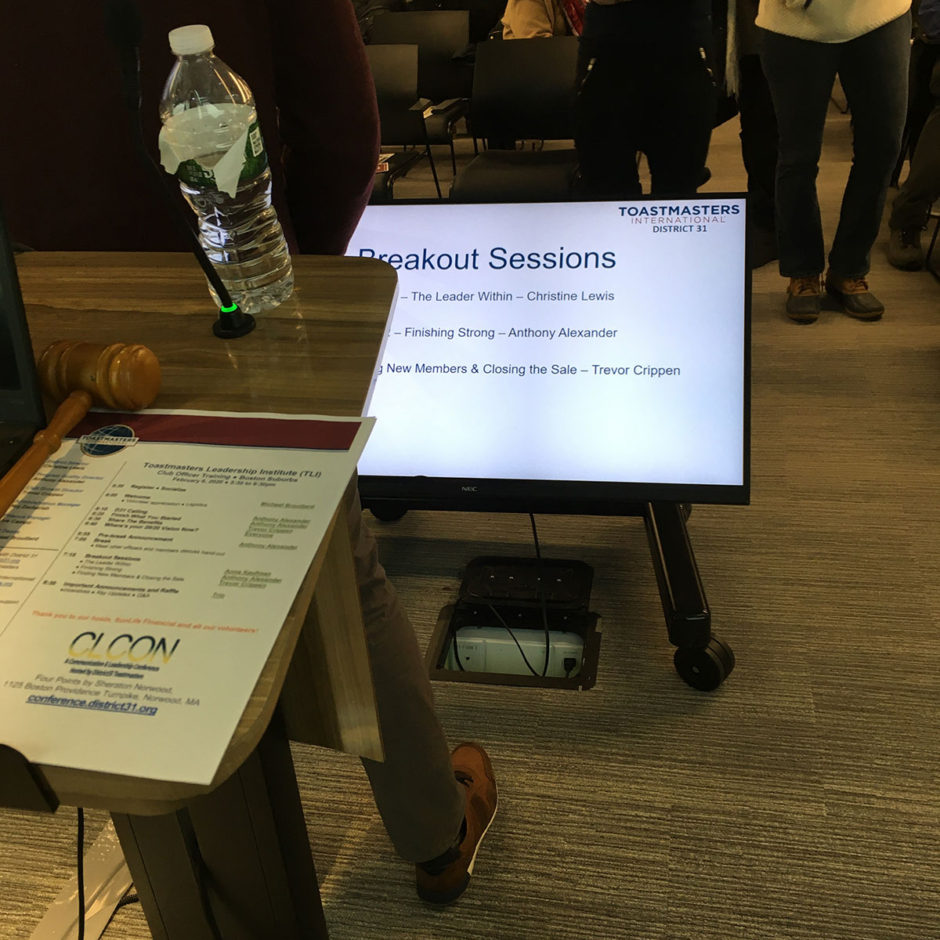Is there such a thing as an “overconfidence monitor”? I think I found one in the wild at a training session I attended in early February.
Why confidence monitors are awesome
In a perfect world, people memorize every presentation they give and always maintain eye contact with the audience. But here in the world we’ve got, that’s not always possible. Enter the confidence monitor. A confidence monitor is a screen that faces the person who’s onstage. It displays either the slides being shown to the audience or the speaker notes for those slides. It’s a way for a speaker to find their place in a presentation without turning their back on the audience. All it takes is a quick glance downward, and a speaker gets the cue they need to keep going.
Why this confidence monitor isn’t awesome
Confidence monitors are meant to help speakers in an subtle way. They’re not meant to take center stage. But the confidence monitor shown in the photo above didn’t get the memo. It was positioned very close to the lectern and the audience. Take a look at the photo below to see how little space there is for the speaker:

Why it’s a problem
This confidence monitor is a physical barrier between the speaker and the audience. Its size implies that the speaker really needs help. And its position at center stage makes it awkward for the presenter to use the whole stage to engage the room because they either have to squeak between the lectern and the monitor or almost brush up against the knees of the people in the front row.
To be an engaging public speaker, it’s important to leave the relative safety of the lectern and to venture out toward the audience. This is because you shouldn’t have anything blocking you from people you’re trying to connect with. With this setup, breaking away from the lectern means choosing a side of the stage to stand on, then carefully making your way through the roadblocks in order to engage the room.
How I’d have done it differently
If I’d been setting up the room, I’d’ve removed the first two rows of seats, moved them to the back, and found a less obvious place for the monitor. It’s on wheels, so it’s easy to move.
Opening up the stage allows for more freedom of movement for the presenter. And being able to make broad gestures and move around without risk putting a foot through an expensive piece of equipment are good things.
What do you think?
Have you ever seen a confidence monitor as large as this? Do you feel the same way about it as I do? Write your comments below!
